I was sitting in the cabin of the Escargot canal cruiser BONZO, a boat my son, Nate, and his friend Bobby Calnan built the summer after they’d graduated from high school. It was a winter evening—cold and dark outside—but I had a fire going in the woodstove and a few candles lit. I heard a knocking on the hull and opened the door to find a woman peering over the transom. “Hi,” she said, “I just wanted to say how much I love your boat.” I invited her to come aboard and she climbed over the transom, a bit awkwardly because she was wearing a long skirt and fashionable leather boots with high heels. I couldn’t fault her for her attire because she’d just gotten off the bus on her way home from work. BONZO was on the trailer, high and dry in my driveway. After spending a quiet and cozy night with BONZO aground on a gravel bar, Nate tidies the forward sleeping quarters while his sister, Alison, does the dishes. The rising tide floated BONZO for the downstream home stretch on the Snohomish River.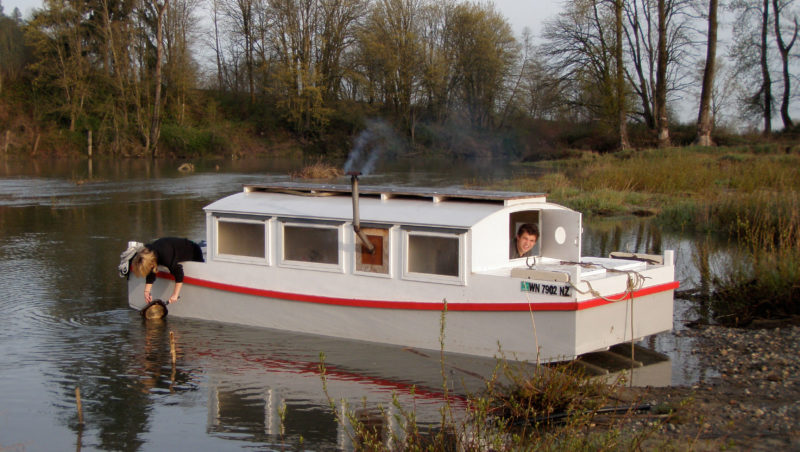 Photographs and video by the author
Photographs and video by the author
Join The Conversation
We welcome your comments about this article. To include a photo with your remarks, click Choose File below the Comment box.
Comments (14)
Comments are closed.

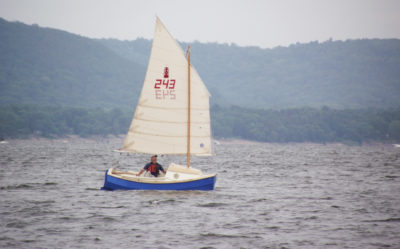
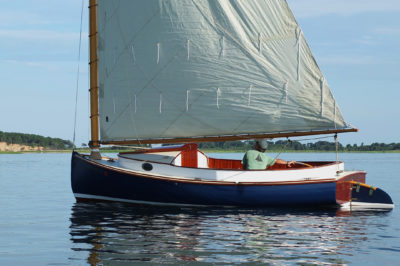
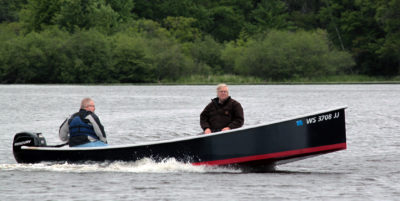
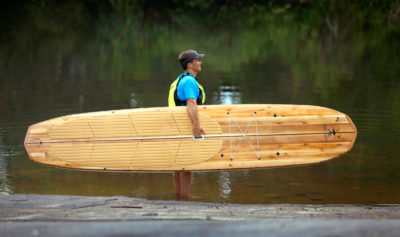
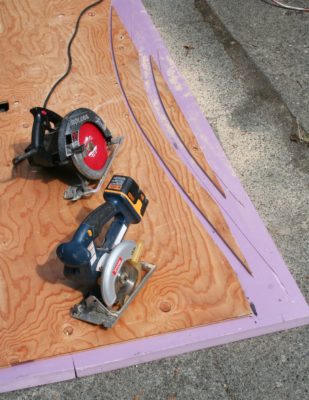
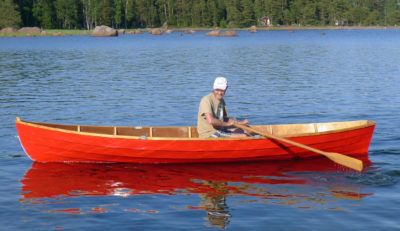


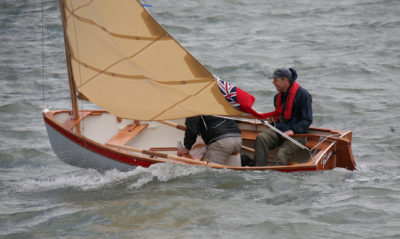
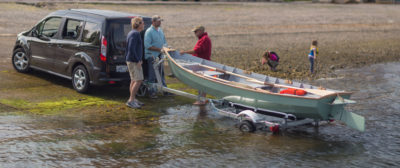
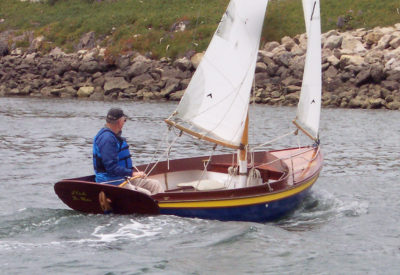
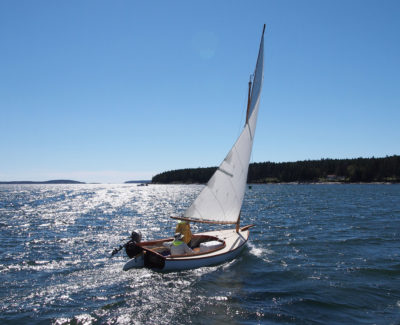
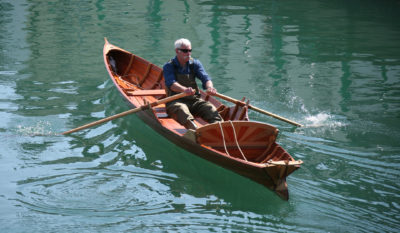
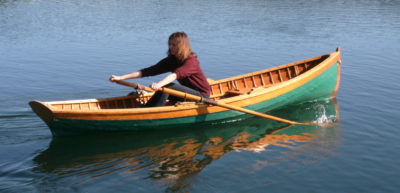
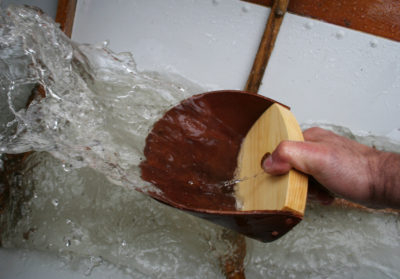
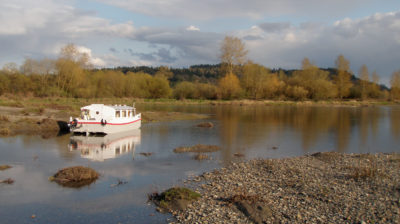
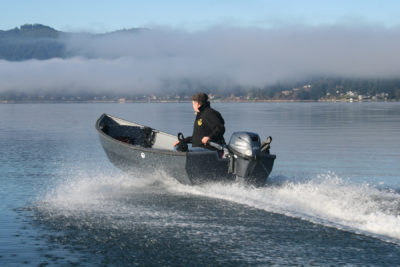
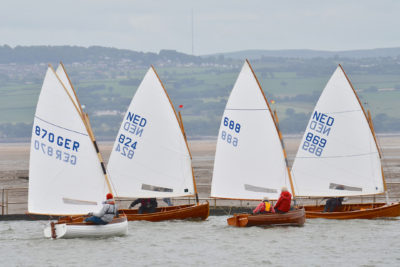


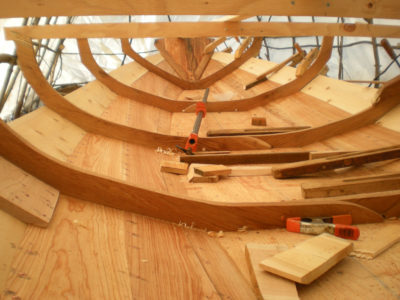
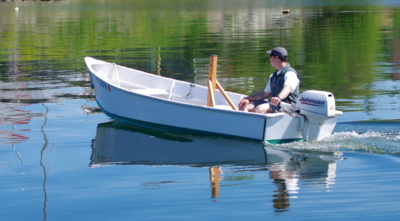
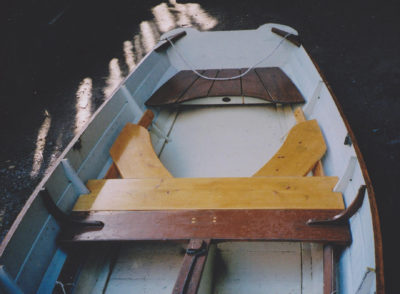
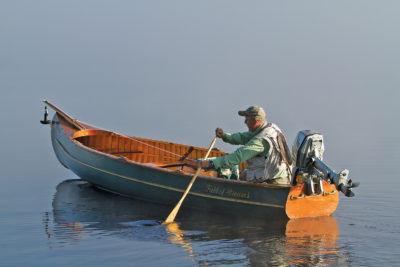
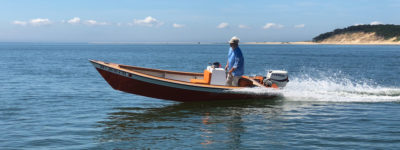

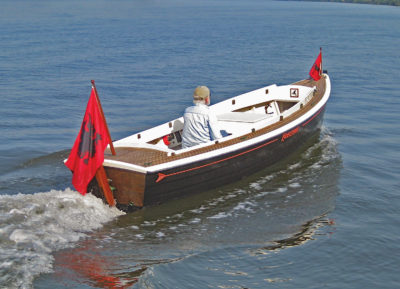
I like the idea of raising the cabin height but wouldn’t a celestory window the length of the cabin achieve the same thing?
That’s certainly a possibility. The cabin is quite brightly lit with the windows it has—too bright on those summer mornings when you’d rather not get up with the sun. Consider curtains for any windows you put in.
I love it! Thanks for the great read and the inspiration.
I’ve been scheming of a similar design, something between this and Harry Bryan’s Shantyboat.
I worry about the amount of slapping at anchor in a bit of chop. Has this been an issue for you?
As you might expect the hull is quite resonant. The noisiest waves are those that slip under the overhang at the bow and make contact on a broad area all at once.(If waves are high enough to hit the bow transom, you may have the wrong anchorage.) I’ve mused about ways to get quieter nights: making the anchor rode fast to a bit on the corner, putting sound-dampening cargo under the forward sleeping platform, stringing a line of fenders under the bow—but haven’t tried any of them yet. In the “sheltered inland waters” Phil designed the boat for, we’ve always been able to find small, quiet coves. The nosiest nights are those Nate has had when he has anchored in Anderson Bay on Lake Washington. It’s the only place in the Seattle City Limits where you can legally anchor and the bay is open to the north.
Great article. We are actually building one of Phil’s boats ourselves now. Not the Escargot but the Joliboat, (a larger version: Length 22’9″, Beam 8′, Draft 9″). You can see progress at our photo album. Our plan is to launch her next summer.
For another neat small houseboat I’d suggest DIANE’S ROSE. featured in Small Boats 2015 and on YouTube.
I have been quite taken with this rather attractive design as a great holiday boat on our River Murray where house-boats abound in huge numbers and many sizes. The problem here is that in the quieter and shallower reaches of the Murray there are submerged trees and stumps, which cannot be removed as they provide habitat for the Murray Cod. It appear that the Escargot has a 1/2″ plywood bottom, which concerns me a little.
Hitting one of these trees might penetrate the hull. I was wondering how an extra sheet laid over rub strips might affect the performance.
The curves on the bottom are not so tight that you couldn’t use thicker plywood on the bottom. Adding fiberglass would further increase the resistance to damage by submerged stumps.
Gorgeous design, do you think the hull could be sail powered? Perhaps with pivoting leeboard and either a balanced lug or lateen sail.
A square sail is the only one we’ve tried and it works very well for making relaxed and quiet downwind runs. I put fittings on the forward end of the cockpit, just to the port side of the door, to support a mast from one of our other boats. That’s as far as we’re likely to carry that experiment. You could put a sail and a leeboard on an Escargot, but if sailing is a priority you might look for a similar design with some concessions made for sailing performance. A few worth taking a look at are the Jewelbox, the Superbrick, and the Triloboat.
Hi Jeroen,
Exciting to see the Joliboat is under construction! Let me know when it’s finished. I would love to come over from Munich to see it!
Take care, Tamiko (Phil Thiel’s daughter)
Hi Tamiko,
Just read your reply! You are more then welcome. The project was on hold for two months because we had to wait for space on the building site. Plan is to erect the frames this summer.
Might be a dumb question, but does it really matter that much if you don’t row in sync as long as the oars don’t hit each other?
It’s not at all a dumb question. When a crew is rowing any boat, whether it’s as heavy as an Escargot or as light as a racing shell, the greatest load comes on the rower at the catch. If the crew is in sync, the load is divided evenly by the number of rowers. If the crew is out of sync, the first oar in the water will feel the entire combined weight of boat and crew. In theory, the load on the rowers could be equally distributed if each made the catch at even intervals, but then that requires as much coordination, if not more, as rowing in sync.